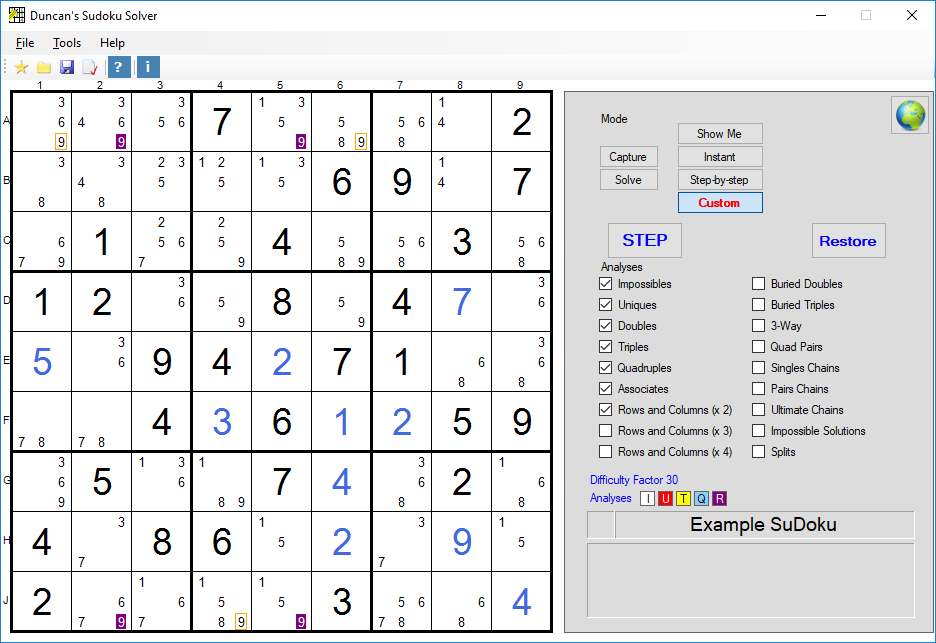

What happens if one of these is assumed to be true, e.g., R1C9? If R1C9 were true, box 3 is solved, leaving two rows of the secondary set to fill three columns of the defining set. The red X's are cells in the secondary set that are not in the defining set. The secondary set contains rows 5, 8 and box 3 (you should color box 3 blue). In your Franken Swordfish example, the defining set contains columns 5, 7, 8. Thus, we can remove all secondary set candidates that are not part of the defining set. We are left with N-1 secondary set units to solve N defining set units, an impossibility. Now, in any general fish pattern, what happens if we assume one of the candidates in the secondary set that is not in the defining set is true? In this case, one of the N units in the secondary set is now solved, but none of the N units in the defining set has been solved. Overlapping units are allowed in a set, but the placement of candidates in the sets is restricted in that case to get a valid fish pattern.
#Sudoku x wing rules plus#
Mutant Fish have one or more boxes in both sets or a mix of rows and columns plus optionally boxes in one or both sets. A couple of key points from the rules:ġ) The number of units, N, in the defining set is equal to the number of units in the secondary setĢ) The candidates in the defining set are a subset of the secondary set, i.e., there is no candidate in the defining set outside the secondary setīasic Fish (X-Wing, Swordfish, Jellyfish) have N rows in their defining sets and N columns in their secondary sets or vice versa.įranken Fish have one or more boxes in either the defining set or secondary set. Sudopedia lists the general fish rules in. I'd like to attempt an explanation based just on the general fish rules. Also, it uses the conjugate pair to explain the eliminations, which while correct in this example, obscures the power of general fish patterns. I am disappointed in Sudopedia's description of Franken Swordfish, as it seems to imply that all Franken Swordfish have to contain a conjugate pair, and that is not the case. In Sudopedia, a house is the same as a unit, i.e., ONE row or column or box. Before I get into this, a correction to your comment "A house is a set of rows or columns belonging to three boxes.". Franken Fish are more general than your description.


 0 kommentar(er)
0 kommentar(er)
